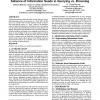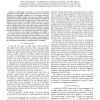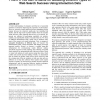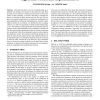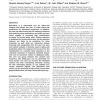129 search results - page 14 / 26 » Why we search: visualizing and predicting user behavior |
SIGIR
2008
ACM
13 years 7 months ago
2008
ACM
Traditional information retrieval models assume that users express their information needs via text queries (i.e., their "talk"). In this poster, we consider Web browsin...
GLOBECOM
2009
IEEE
14 years 2 months ago
2009
IEEE
— In this paper we evaluate, by means of Extrinsic Information Transfer (EXIT) charts, an iterative receiver that has emerged as a promising candidate for non-coherent multi-user...
SIGIR
2011
ACM
2011
ACM
Find it if you can: a game for modeling different types of web search success using interaction data
12 years 10 months ago
A better understanding of strategies and behavior of successful searchers is crucial for improving the experience of all searchers. However, research of search behavior has been s...
ECAI
2006
Springer
13 years 11 months ago
2006
Springer
Abstract. This paper describes a new way of implementing an intelligent web caching service, based on an analysis of usage. Since the cache size in software is limited, and the sea...
NAR
2007
13 years 7 months ago
2007
SplicePort is a web-based tool for splice-site analysis that allows the user to make splice-site predictions for submitted sequences. In addition, the user can also browse the ric...
